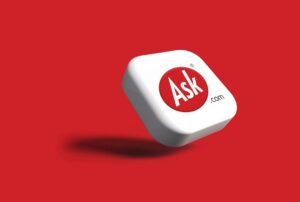Pre-Seed vs. Seed Funding: Choosing the Right Early-Stage Investment

Meta Description: Understand the key differences between pre-seed and seed funding rounds to make informed decisions for your early-stage startup investment.
Introduction
Navigating the early stages of startup financing can be daunting, especially when distinguishing between pre-seed and seed funding rounds. Understanding the seed round differences is crucial for entrepreneurs seeking the right investment to propel their ventures forward. This guide explores the nuances of each funding stage, helping you make informed decisions for your startup’s growth.
What is a Pre-Seed Funding Round?
Pre-seed funding serves as the foundational capital that transforms a startup’s initial concept into a viable business. This stage typically involves:
- Market Research: Validating the business idea and understanding the target market.
- Prototype Development: Creating a minimally viable product (MVP) to demonstrate functionality.
- Early Customer Validation: Engaging with potential users to gather feedback and refine the product.
Pre-seed funding often comes from personal savings, friends, family, or early-stage investors. The amounts raised are generally in the early hundreds of thousands, aimed at building a solid foundation and preparing for the next funding round.
Indicators You’re in the Pre-Seed Stage
- Pre-Product Development: You have a basic version of your product or a working prototype.
- Identified Market Opportunity: Clear understanding of the problem you’re solving and the market demand.
- Initial Team Formation: Starting to build your team by making your first few hires.
- Rising Expenses: Costs related to development, such as cloud services or initial marketing efforts.
How to Identify a Seed Funding Round
Transitioning to a seed funding round signifies that your startup has moved beyond the initial concept and is ready for more substantial growth. Key characteristics include:
- Higher Valuations: Seed rounds typically involve raising millions with valuations in the tens of millions.
- Angel Investors and Venture Capital: Engaging with more formal investors who bring not just capital but also expertise.
- Product-Market Fit: Demonstrating that your product resonates with users and shows potential for scalability.
- Revenue Streams: Early indicators of revenue, even if not yet profitable.
Signs You’re Raising a Seed Round
- Established Product-Market Fit: Evidence that your product meets a market need.
- Team Expansion: A growing team with diverse skills contributing to business growth.
- Equity Distribution: Offering equity to investors in exchange for capital.
- Increased Traction: Metrics such as user growth, engagement, or initial sales demonstrating momentum.
Common Mistakes to Avoid When Raising Funds
Lack of a Clear Business Plan
Investors seek a well-structured business plan outlining your vision, goals, and strategies. Missing elements like an executive summary, market analysis, or financial projections can deter potential investors.
Underestimating Networking Importance
Building relationships is essential. Attend industry events, leverage platforms like LinkedIn, and join incubators or accelerators to connect with investors and peers.
Ignoring Investor Feedback
Investor insights can refine your strategy and improve fundraising efforts. Ignoring feedback may hinder your ability to secure funding and damage your reputation.
Unpreparedness for Due Diligence
Ensure your financial records, legal compliances, and team backgrounds are in order. Transparency and preparation streamline the due diligence process, increasing investor confidence.
Successful Companies That Raised Pre-Seed Rounds
Robinhood
Raised pre-seed funding through Y Combinator in 2012, enabling the development of a commission-free trading platform that revolutionized the finance industry.
Airbnb
Secured a $20,000 pre-seed round in 2008 from Y Combinator, laying the groundwork for a global lodging marketplace that transformed hospitality.
Notion
Initialized with pre-seed funding in 2013, Notion developed an all-in-one productivity platform that grew to a $10 billion valuation by 2023.
Companies That Jumped Straight to Seed Rounds
Slack
Skipped the pre-seed stage, raising significant seed funding in 2013. This strategic move facilitated rapid growth, culminating in a $27.7 billion acquisition by Salesforce in 2021.
Raised a substantial seed round in 2010 with support from top investors, enabling the visual discovery platform to scale quickly to a $22.45 billion market cap by 2024.
Canva
Bypassing the pre-seed stage, Canva secured seed funding in 2013, which fueled its innovative design tools and rapid user expansion, leading to a $40 billion valuation in 2021.
Next Steps After Determining Your Funding Round
Once you’ve identified whether you’re in the pre-seed or seed stage, focus on:
- Optimizing Terms: Ensure your funding terms align with your startup’s needs and future growth.
- Strategic Execution: Prioritize executing your business vision over the terminology of funding stages.
- Leveraging Tools: Utilize platforms like TOPY AI to streamline co-founder matching and business planning, accelerating your startup’s trajectory.
Embark on your startup journey with confidence by choosing the right funding stage and leveraging innovative tools to achieve success.
Ready to streamline your startup launch? Get started with TOPY AI today and accelerate your path to success!




